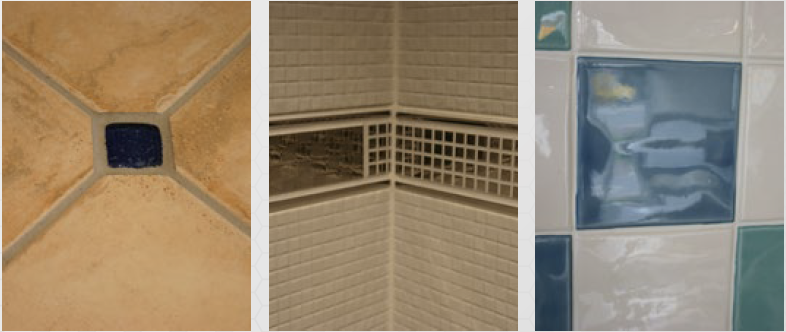As porcelain is less porous due to its density and manufacturing process, it is not only resistant to water absorption, but also liquids and chemicals. This also means they are more frost resistant, Algae and stain resistant. Meaning very low maintenance.
Tile hardness is graded with a PEI (Porcelain Enamel Institute) rating 0-5 where 5 is the hardest.
PEI Class 0: Ceramic tiles technically unsuitable for floors. These are generally used as wall tile.
PEI Class I: Ceramic tile suggested for residential and commercial wall applications only. Floor tiles suitable only for locations where softer footwear is worn or where shoes are not frequently used, for e.g., residential bathroom or other areas with light traffic
PEI Class II: Ceramic tile suggested for interior residential and commercial wall applications and for residential bathroom floor applications only. Tiles suited for general residential traffic. For areas that are walked on by soft soled or “normal” footwear with very small amounts of scratching dirt. Not for kitchen, entrance halls, stairs and other areas subjected to heavy traffic.
PEI Class III: Ceramic tile suggested for residential floors, light to moderate traffic areas only, e.g., bathrooms, halls, living rooms and wall applications. Tiles suited for all residential and light commercial areas such as offices, reception areas, interior walls, countertops and residential bathroom floors. Not recommended for commercial entrances.
PEI Class IV: Porcelain/Ceramic tile suggested for residential floors, moderate to heavy traffic areas, e.g., bathrooms, halls, kitchens, conservatories, and wall applications. Tiles suited for regular traffic. Recommended for medium commercial and light institutional use, such as restaurants, hotels, commercial entrances.
PEI Class V: Porcelain tile suggested for all residential floors, medium commercial floors, and wall applications. Tiles suitable for areas with heavy traffic, abrasive dirt and moisture, and where safety and maximum performance are required. Examples are shopping malls, public buildings, building entrances, or swimming pools.
CHOOSING THE RIGHT DIAMOND BLADES
Ceramic Porcelain Continuous Rim Blades
One of the issues that comes up when working with porcelain or ceramic material is that the material is so hard that it can be easily chipped during the cutting and shaping process. Another factor that can affect the process of working with these materials is the heat that can be generated by the friction of the blade cutting the material. One way blade designers overcome the potential chipping issues is by engineering diamond blades that have a continuous rim.
Thin Rim Porcelain Cutting Blades
Another style of porcelain blade available is the thin rim blade. Since they are so thin, they remove less material at once and therefore they do not chip as easily as other blades do. Also, thin rim diamond blades for cutting porcelain usually have a more pronounced texture on the sides of the rim. This allows for greater material removal. This texturing on the sides of the rim will vary in pattern, this also acts as a water carrier into the cut to reduce heat and dust.
Narrow Gullet Porcelain Blades
These blades are specially designed to cut thicker porcelain up to 1” meaning they are ideal for landscapers. Being narrow gullet they are ideal for use in large handheld saws.
Most importantly with cutting any ceramic or porcelain tile the tile must be placed on a firm bed with no part of the tile overhanging. This is to reduce the chance of chipping the tile at the end of the cut.

Copyright 2022 H2® Diamond Tools